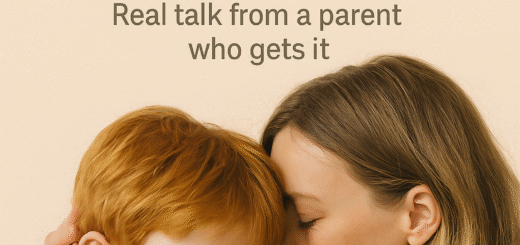Creating an Autism-Friendly Haven: Our Journey Together

Hello, it’s Amit once again. I’ve been sharing my experiences with you about the ups and downs of parenting my fantastic son, Saar. For those following my journey, you might recall my previous post, “Helping Saar Navigate Social Situations,” where I discussed some challenges we faced in assisting Saar with his social interactions. Before that, we discussed “Discovering Saar’s Incredible Talents,” and how they play a significant role in his daily life.
I invite you to glimpse our home and discover how we have created a comforting and nurturing space for Saar. As a high-functioning individual with autism, it has been a journey filled with love, learning, and profound understanding to create an environment that caters to his unique needs.
Upon Saar’s initial diagnosis, a wave of emotions washed over me – fear, confusion, and a strong desire to provide the best possible support. I’ve invested countless hours researching, consulting with professionals, and listening to Saar’s input to aid in this endeavor. Through this process, I’ve discovered that an autism-friendly environment is not a one-size-fits-all solution but a journey of trial and error, continuous learning, and adaptation.
Understanding Sensory Sensitivities
One of the most significant challenges for Saar was his sensory sensitivities. Autistic individuals often experience the world more intensely than others. What might seem like a gentle hum to us can sound like a roar to them. We took these sensitivities into account when designing our home environment.
We began with soundproofing his bedroom, installing heavy curtains and rugs to absorb noise. We also kept our house relatively quiet, minimizing unnecessary loud sounds. Finally, we invested in noise-canceling headphones for Saar for times when the outside world was too noisy.
Lighting was another aspect we needed to adjust. Saar is sensitive to bright, harsh lights, so we made sure to have soft, adjustable lighting in his room. We also installed blackout blinds for him to control the amount of natural light coming into his space.
Creating a Safe Space
We decided to allocate some of his room to his interests to fulfill this need. Saar has always been a lover of predictability and routine, and creating a personal, safe space for him was essential. So, we dedicated a corner of his room to his interests. This corner, filled with his favorite books, puzzles, and action figures, acts as a sanctuary when he needs a break from the world.
This space is his, and we respect it. If he retreats there, we understand that he needs some time to himself and give him that space. Understanding and respecting his boundaries have helped him feel secure and comfortable in his home.
Structured Routine and Visual Aids
Saar thrives on routine. Having a structured way provides him with a sense of security and predictability. We keep an extensive, color-coded visual schedule in our kitchen that outlines our daily and weekly activities. This schedule helps Saar prepare for what’s coming next and reduces anxiety around unexpected events.
Flexibility and Patience
Despite the importance of routine, we’ve also learned the necessity of flexibility. Not everything goes as planned, and we’ve had to learn to adapt. If Saar is having a tough day and needs to skip an activity, we allow it. We’ve learned that sometimes, it’s better to adjust our plans than to insist on sticking to the schedule at the expense of Saar’s well-being.
Communication
Another critical aspect we’ve focused on is improving communication. Saar sometimes struggles with expressing his emotions and needs verbally. To support him, we’ve used various communication tools such as visual aids, simple sign language, and even apps designed to facilitate communication for autistic individuals.
Inclusion in Decisions
Saar is 17, and he is eager to be more independent. So, we’ve made it a point to include him in decisions regarding his environment. Whether choosing new paint for his room or deciding on a new piece of furniture, his input is valued and respected. This has boosted his self-confidence and given him a sense of ownership over his space.
Understanding and Acceptance
Above all, the most crucial aspect of creating an autism-friendly environment is fostering an atmosphere of understanding and acceptance. So, we’ve made it a point to educate ourselves and our family about autism, Saar’s unique needs and strengths, and the beauty in his worldview. We’ve learned that autism is not something to be ‘fixed’ but a part of Saar that should be accepted and celebrated.
Closing Thoughts
Reflecting on our journey, I realize that while we’ve made our home a safe space for Saar, the process has also transformed us. We’ve become more patient, more understanding, and more appreciative of the little things in life.
We’ve learned that our job is not to change Saar but to support and provide him with an environment where he can thrive just as he is. And while it hasn’t always been easy, watching Saar grow, learn, and smile in his space has made every effort worthwhile.
I hope sharing our journey might help another parent in the same position we were in years ago. I want you to know that you are not alone, and while the journey may seem daunting at first, the rewards are immeasurable.
Remember, creating an autism-friendly environment is less about making physical changes to your home and more about creating an atmosphere of love, acceptance, and understanding. And believe me, your child will feel that love, and in their unique way, they will let you know how much it means to them.
Until next time,
Amit



1 Response
[…] Saar’s sensory sensitivities, a topic we’ve touched upon when discussing the adjustments we’ve made to our home environment, are another area of concern. The world can be a loud, bright, and chaotic place for Saar, and I often wonder how he will manage in an environment that isn’t designed with his unique sensitivities in mind. I quote, “What might seem like a gentle hum to us can sound like a roar to them”1. […]